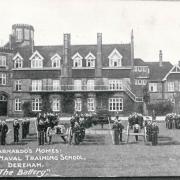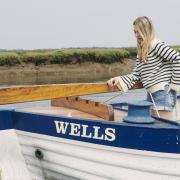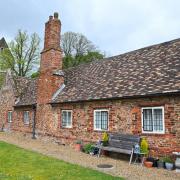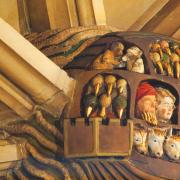Walking across the 40 acres of marsh in front of Marsh Farm, Thorpe-next-Haddiscoe, the land is criss-crossed with dykes dating from the 17th century.
Put in by the Dutch to drain what was once a substantial estuary, even now wiggly ‘shadows’ of ancient creeks can be seen.
Today the grazing marsh is still divided into small sections, very much as it would have been when the farmhouse was built in the 1700s. In early summer though, the eye is immediately drawn to the pleasing contrast between the emerald green vegetation and the rich russet coats of the Marshland Herd of Red Poll cattle dotted among the lush grass.

'We moved to Marsh Farm in 1996 and wanted to protect the view and this unique habitat so bought the marsh in 2004,' explains owner Alison Allen. 'It had been used for beef sucklers and the previous owner boom sprayed with herbicide annually to keep down anything that wasn't grass. Also, a big area of land next to us was abandoned and had reverted to proper marsh reedbed. We not only wanted to preserve the Broads landscape and convert it back to flower-rich grassland, but to bring the wildlife back too – particularly the pairs of lapwing that fill the air with their springtime calls. The question was how to manage the land for conservation.'
While training as a vet, Alison had gained experience of animal husbandry and she and husband Chris’s first move was to put pedigree Southdown and Romney Marsh sheep on the marsh. To achieve conservational grazing, the plan was that the sheep would get the grass down to a nice length for nesting lapwing. However, they ignored the sedge and rushes which crowded out the more sensitive marshland plants and, unfortunately, they also had a taste for the flowers.
Alison began looking for an animal that would happily eat rough sward and at the Royal Norfolk Show, found a breed of cattle that not only fitted the bill, but would amazingly leave the flowers alone.

It was no accident that Alison’s Red Polls were perfectly suited to the rougher environment, as they are descended from an ancient breed of small, hardy, red and white beef cattle called the Norfolk Red, which once roamed the grasslands of the county. In the 19th century, they were crossed with a light brown breed of dairy cow called the Suffolk Dun. The resulting specimen was bred to be ‘polled’ (or hornless) and a uniform burgundy colour, marrying the best attributes of both breeds which then became extinct. Today the Red Poll is renowned for its old-fashioned rich marbled meat.
'Our herd quickly started opening up the dense vegetation crowding out the flowers. Local farmer Dennis Jenkins kindly loaned us a bull until we bought Lazarus in 2022, who is a big softie and even more placid than the girls. They are remarkably easy to look after and this is partly down to their hardiness,' Alison remarks. 'Requiring no extra supplements, they grow a thick winter coat which means that when they come in during November, we house them in big straw pens with no roof. We usually wean the calves in January. Lazarus stays with the cows all year and the weaned calves go in with the retained heifers from the previous year, which means we have two groups of cattle in the spring. They return to the marsh at the end of March and moult into their sleek, shiny coat.'

Alison’s herd calve outside in May and June and she sells two-year-old female calves for breeding stock, while the one-year-old steers go to Norwich Market. She still has three of her original cows left, two cows that are daughters of the originals and one grand-daughter. Efforts by her and other dedicated breeders throughout the country mean the Red Poll is no longer on the Rare Breeds Survival Trust’s ‘Watch List,’ as the breeding stock of cows has recently exceeded 2,000. In 2023, Alison was delighted to win first place for ‘Lyra’ in the Homebred Heifer Class of the Eastern Region Herd Competition.
'The judge comes out to inspect the animal in the field, so there is no washing or worries about halter training,' Alison smiles. 'However, I am most proud of the system we have introduced which has benefited the peaty marsh. We dug extra foot drains which provide the shallow damp edges that lapwing chicks need to feed and have our own sluices to control water levels. The sheep stay out over winter, then we move them in spring and summer to a separate field. We have snipe feeding and there are lots of orchids and bog pimpernel that likes the short, wet, open areas created by the cows. It’s a win-win for wildlife and cattle from the past which is seeing a revival.'



























